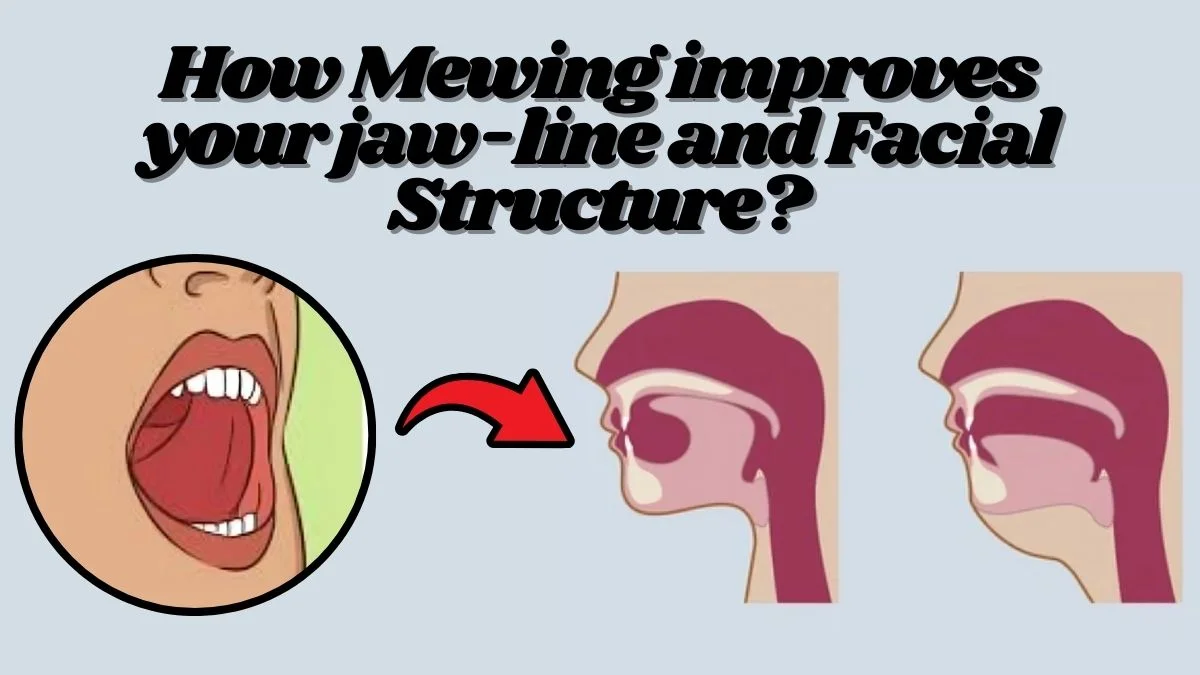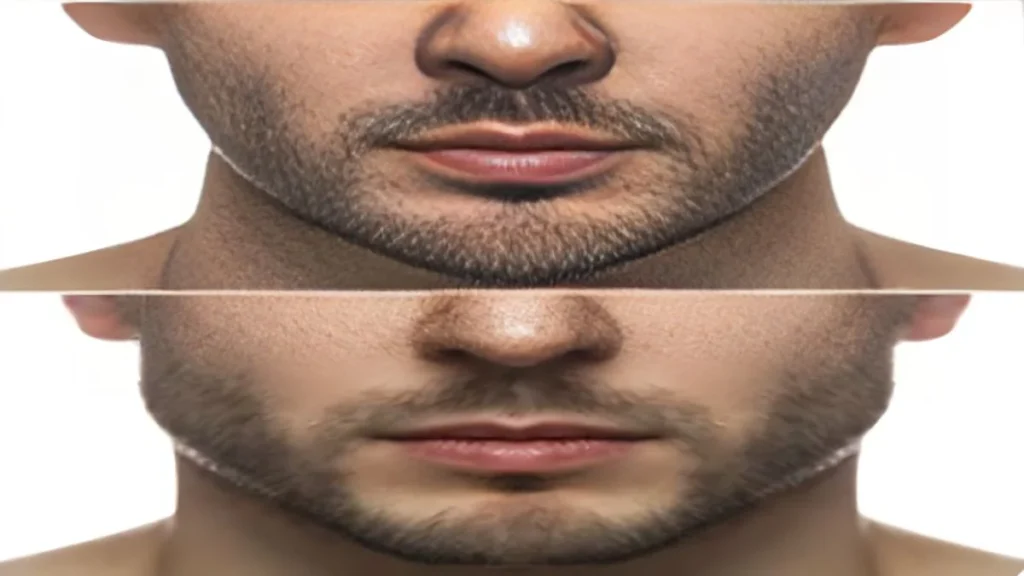TIPS
How Mewing Improves Jawline and Facial Structure

Mewing is a technique that involves correctly positioning the tongue to improve facial structure, oral hygiene, and even posture. While being credited by Dr John Mew and his son, Dr. Mike Mew, it is based on an orthotropics philosophy that focuses on proper facial growth and position. Practitioners recommend pressing the tongue against the roof of the mouth to make slight shifts in aesthetics and wellness. Its endorsement has spread through social media platforms and within the scientific community, Mewing proving beneficial to orthopedic treatment, serving as long-term therapy for the children and adults population as well.
The Science Behind Mewing
Mewing itself is built on a concept that mainly focuses on the tongue positioning on the palate as a determinant of cranial restructuring. When the tongue lies against the roof of the mouth, it comes into position to assist with the proper growth of the upper jaw as well as good breathing through the nose. While mouth breathing is associated with such problems as facial asymmetry and poor posture. This technique detaches the upper lip and turns its pressure to activate the ideal jaw position and demuzzle any overcrowding of teeth. It also helps in correct placement of the head and neck thereby helping in good postural alignment of the rest of the part of the body. Although systematic evidence is lacking the initial research and experiential data indicate promising results, which is why mewing can be considered as one of the most promising new trends in modern orthopedics.
How to Practice Mewing: Step-by-Step Guide
- Step 1: Rest your tongue flat against the roof of your mouth, covering as much surface area as possible.
- Step 2: Ensure your lips are sealed and your teeth are gently touching.
- Step 3: Breathe through your nose to maintain proper tongue posture.
Avoid pushing too hard with your tongue or clenching your jaw, as this can cause discomfort. Practice consistently throughout the day to develop muscle memory. Combine mewing with mindful breathing exercises for best results.
Benefits of Mewing
Mewing offers a variety of benefits:
- Facial Structure: Helps customers get a chiseled jaw and assists in achieving better symmetry of the face.
- Posture: Makes adjustments on the head, neck and spine in an effort to correct posture.
- Oral Health: Treats crowding in the dental arch, corrects malocclusion, and stops snoring.
- Breathing: Promotes nasal breathing which is helpful to the body.

Although experiences may not be the same, mewing is easy and harmless with enormous possible benefits in enhancing physical and positive beauty.
Who Can Benefit from Mewing?
This technique is suitable for individuals of all ages, although its effects are most pronounced in children and adolescents whose facial bones are still developing. Early adoption of proper tongue posture can prevent orthodontic issues and support natural growth patterns. Adults can also benefit, particularly in improving posture, jawline definition, and nasal breathing. While adults may experience slower changes due to mature bone structures, consistent practice can still yield noticeable improvements over time. Overall, this technique is a versatile technique that can benefit anyone interested in enhancing their facial structure and oral health naturally.
Mewing for Children and Adolescents
Early intervention through this technique is particularly impactful for children and teens. During growth years, proper tongue posture supports harmonious facial development and prevents issues like dental crowding and recessed jaws. Parents play a crucial role in guiding their children to adopt good habits, such as breathing through the nose and maintaining correct posture. Orthotropic treatments may complement mewing for more advanced concerns. Consulting a professional orthodontist ensures that interventions align with the child’s unique developmental needs, maximizing the benefits of this natural technique during the critical growth phase.
Common Myths and Misconceptions About Mewing
- “Mewing can replace orthodontic treatment entirely.”
- “Results are instant and dramatic.”
- “Anyone can achieve a perfect jawline through mewing.”
These myths misrepresent the mewing’s capabilities. While it is a valuable tool for promoting facial alignment and oral health, it is not a replacement for orthodontic care. Results require time, consistency, and realistic expectations. Mewing works best as part of a comprehensive approach to facial development and wellness, guided by expert advice where necessary.
Mewing for Adults: Is It Too Late?
Although facial bones in adults are less malleable, this technique can still offer significant benefits. Improved posture, subtle changes in jaw definition, and enhanced breathing are common outcomes for adults practicing mewing. Consistency is key, as results may take longer compared to children. Adults can combine mewing with complementary lifestyle changes such as chewing firm foods, practicing good posture, and addressing any existing oral health issues. While dramatic transformations are less likely, adults often find that this technique helps refine their appearance and supports overall well-being.
Orthotropics vs. Traditional Orthodontics
- Orthotropics: Focuses on natural facial growth and underlying causes of misalignment.
- Traditional Orthodontics: Addresses teeth positioning using braces or aligners.
- Key Differences: Orthotropics emphasizes prevention and holistic development, while orthodontics often targets correction.
Understanding these differences helps individuals make informed decisions about their facial and dental care needs.
Challenges in Mewing and How to Overcome Them
Many people struggle with maintaining proper tongue posture throughout the day. Fatigue and nasal breathing difficulties are common challenges. To overcome these issues, practice tongue exercises to build strength and consistency. Techniques such as deep nasal breathing and chewing firm foods can support proper tongue positioning. For those experiencing persistent difficulties, consulting an orthodontist or an ENT specialist may help identify underlying issues such as tongue tie or nasal obstruction, ensuring a smoother journey toward mastering mewing.
Conclusion
This technique combines aspects of innate positioning and fighting against present-day orthodontic issues, providing individuals with a straightforward yet successful method toward facial enhancement, correct posture, and oral care. If you are a parent helping your child develop proper speech or an individual wanting change without surgery, mewing can help. With increased research and awareness, mewing is poised to become a major player in determining the evolution of facial care and overall health. It’s about time to begin, accept the challenge and go towards the direction of amping up your health and confidence.
-

 GENERAL2 months ago
GENERAL2 months agoUncovering the World of кинокрадко: The Dark Side of Film Piracy
-

 GENERAL1 month ago
GENERAL1 month agoUnveiling the Art of преводсч: How Translators Bridge Language Barriers
-

 YOGA1 year ago
YOGA1 year ago4 Person Yoga Poses for Beginners
-

 GENERAL2 months ago
GENERAL2 months agoThe Journey of iamnobody89757: From Anonymous User to Internet Sensation























